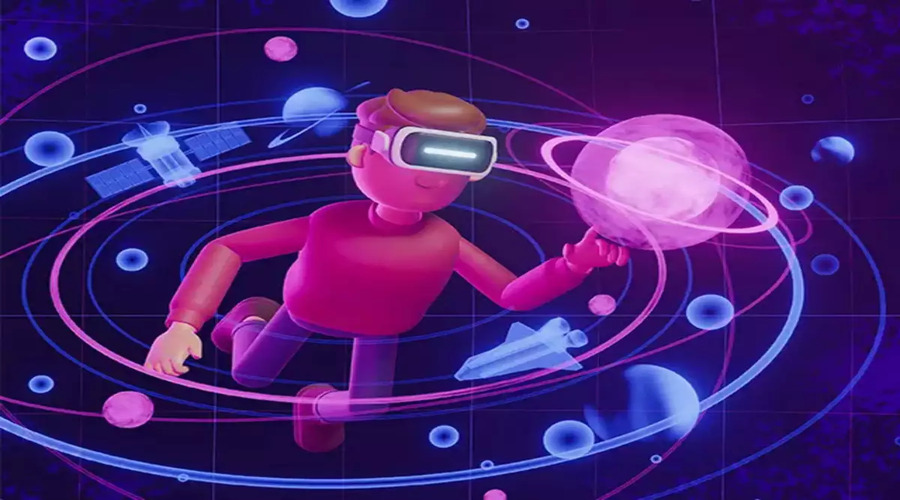Virtual reality and the metaverse are not just for gaming and entertainment. They also offer exciting opportunities for scientific research and exploration. In this article, we will explore the ways in which virtual reality can be used for scientific purposes and discuss the potential benefits and challenges of using the metaverse as a tool for research.
Introduction to Metaverse Science
Metaverse science refers to the use of virtual reality and the metaverse for scientific research and exploration. This can include applications in fields such as astronomy, biology, geology, and environmental science. The metaverse offers a unique platform for scientific research, as it allows scientists to simulate and study complex systems and phenomena in a virtual environment.
Applications of Metaverse Science
There are many exciting applications of metaverse science across a range of scientific fields. For example, virtual reality can be used to simulate the formation and evolution of galaxies, allowing astronomers to study these complex systems in greater detail. In biology, virtual reality can be used to create 3D models of complex molecules and proteins, aiding in drug discovery and development.
Virtual reality can also be used for environmental science research, such as studying the impact of climate change on ecosystems or simulating the effects of natural disasters. In addition, the metaverse can be used to create immersive educational experiences for students and the public, such as virtual field trips to scientific sites or interactive simulations of scientific concepts.
Challenges and Considerations
While metaverse science offers exciting possibilities for scientific research and exploration, it also comes with challenges and considerations. One of the main challenges is the need for accurate and reliable data input. Virtual simulations are only as accurate as the data that is used to create them, and inaccuracies or biases in the data can impact the validity of the research.
In addition, virtual simulations can be expensive and time-consuming to create, and require specialized technical expertise. This can make it difficult for smaller research teams or organizations with limited resources to access the benefits of metaverse science.
Collaborative Research in the Metaverse
Collaborative research is another exciting possibility in the metaverse, allowing scientists from around the world to work together in a virtual environment. This can include real-time collaboration on experiments and simulations, as well as the creation of virtual research communities where researchers can share data, tools, and insights.
In addition, virtual reality can be used to create immersive scientific conferences and workshops, allowing researchers to connect and collaborate with colleagues from different disciplines and geographic locations.
Ethical Considerations in Metaverse Science
As with any form of scientific research, metaverse science also raises important ethical considerations. For example, virtual simulations of human subjects raise questions about informed consent and privacy, and the potential for virtual research to replace real-world experiments raises questions about the validity and generalizability of research findings.
To address these issues, virtual world platforms and researchers need to adhere to established ethical guidelines and protocols, such as those developed by the National Science Foundation and the International Council for Science. This includes ensuring informed consent and privacy protections for virtual research participants, as well as conducting rigorous validation studies to ensure the accuracy and generalizability of research findings.
Metaverse Science and Citizen Science
Metaverse science also has the potential to engage a wider audience in scientific research through the concept of citizen science. Citizen science refers to the involvement of non-professional scientists in scientific research, often through crowdsourcing data or contributing to research projects.
Virtual reality can be used to create immersive citizen science projects, allowing individuals from around the world to contribute to scientific research in fields such as astronomy, ecology, and environmental science. This can include tasks such as identifying celestial objects, classifying animal species, and monitoring changes in ecosystems.
The Future of Metaverse Science
The future of metaverse science is full of possibilities, as advancements in virtual reality and the metaverse continue to evolve. With the potential for real-time collaboration, immersive simulations, and citizen science engagement, the metaverse could become a powerful tool for scientific research and exploration.
As virtual world platforms and developers continue to invest in metaverse science, we can expect to see new innovations and applications emerge across a range of scientific fields. The possibilities for scientific discovery and advancement in the metaverse are endless, and we are only just beginning to scratch the surface of what is possible.
The Role of Virtual Reality in Science Education
In addition to scientific research and exploration, virtual reality can also play a significant role in science education. Virtual reality can be used to create immersive educational experiences, allowing students to explore scientific concepts in a more engaging and interactive way.
For example, virtual reality can be used to create interactive simulations of scientific phenomena, such as the human body or the solar system. This can help students to better understand complex concepts and systems, and can also provide opportunities for hands-on experimentation and exploration.
Accessibility and Inclusion in Science Education
Virtual reality can also promote accessibility and inclusion in science education, allowing students with disabilities or limited access to resources to participate in scientific learning experiences. Virtual reality can provide an alternative to traditional hands-on experiments, allowing students to explore and interact with scientific concepts in a way that may not be possible in a physical classroom setting.
Virtual reality can also be used to promote diversity and representation in science education, showcasing the contributions of underrepresented groups in scientific fields and providing opportunities for students from diverse backgrounds to see themselves reflected in the scientific community.
Conclusion
Metaverse science offers exciting possibilities for scientific research and exploration, and has the potential to transform the way we study and understand complex systems and phenomena. By addressing challenges and considerations, we can work towards creating a more accessible and equitable platform for scientific research in the metaverse.



